Corundum
Corundum is a very popular mineral, a crystalline form of Aluminium Oxide. It is a naturally transparent material with two gem varieties – Sapphire and Ruby.
Corundum is used as the defining mineral for 9 on the Mohs hardness scale and is sometimes used as an abrasive for cutting other stones.
It can occur in a wide range of colours, including black, colourless, brown, purple, red, pink, blue, green and more!
Showing all 5 results
-
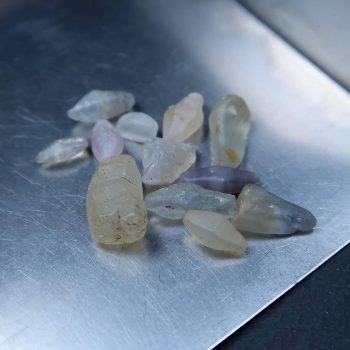
Corundum Specimens / Rough (Mixed)
Price range: £1.00 through £4.00 -
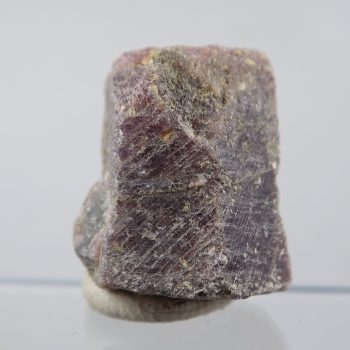
Corundum Specimens / Rough (Purple)
Price range: £2.00 through £4.00 -
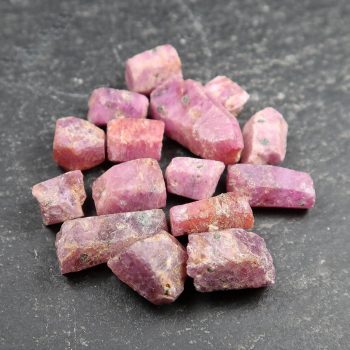
Corundum Specimens / Rough (Red/Ruby)
Price range: £2.00 through £4.00 -
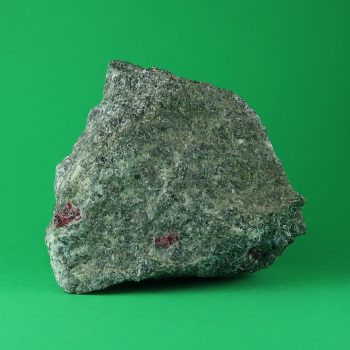
Ruby in Pargasite from Mundarara mine, Tanzania
£3.50 -
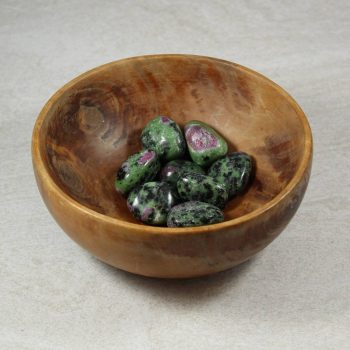
Ruby in Zoisite Tumblestones
£4.95
Uses and History
Corundum has a couple of obvious uses – the first is, of course, jewellery!
There are two gem quality variants of Corundum – Ruby, which is red, and Sapphire, which occurs in a range of colours. This puts Corundum as two out of the three most commonly used coloured jewellery stones!
Outside of jewellery, there are a few interesting industrial uses – the most common being as an abrasive.
Corundum measures 9 on the Mohs scale, which makes it perfect as an abrasive – perfect for sandpaper and emery. It is sometimes cemented into resins or ceramics to produce abrasive wheels, flap disks, etc.
There are plenty of other industrial uses, including scratch-proof coatings for phone screens, watches, solar panels – it can even be used for spacecraft windows. Corundum can be synthetically created at a relatively low price, due to the simplicity of the Verneuil method – including very large crystals.
Locales
Corundum occurs all around the world, with some particularly nice specimen pieces found in Afghanistan, Brazil, China, India, Italy, Kenya, Madagascar, Malawi, Mozambique, Myanmar, Nepal, Norway, Pakistan, Sri Lanka, Switzerland, Tanzania, the USA, and Vietnam.
Mineralogy
Sapphire is a gem quality variant of Corundum which occurs in a wide range of colours.Ruby is a gem quality variant of Corundum which is a red or pink colour.
Corundum can occur in a wide range of other colours, including colourless, black, blue, red, violet, pink, green, yellow, orange, grey, white and multicoloured pieces.
Hazards and Warnings
Unless powdered, there should be no health concerns with Sapphire or Corundum. Aluminium Oxide can be a fire/toxic hazard, but this should not be an issue with the crystalline form.
Almost all rocks, minerals (and, frankly, almost all other substances on earth) can produce toxic dust when cutting, which can cause serious respiratory conditions including silicosis.
When cutting or polishing rocks, minerals, shells, etc, all work should be done wet to minimise the dust, and a suitable respirator or extraction system should be used.
Translations
Arabic:
- الياقوت
Hindi:
- कोरन्डम
Portuguese:
- corindo
Bengali:
Indonesian:
- korundum
Punjabi:
- ਕੋਰੰਡਮ
English:
- corundum
Italian:
- corindone
Russian:
- корунд
French:
- corindon
Japanese:
- コランダム
Spanish:
- corundo
German:
- Korund
Korean:
- 강옥
Thai:
- คอรันดัม
Gujurati:
- કોરન્ડમ
Mandarin and Traditional Chinese:
- 刚玉
Urdu:
- کورنڈم
